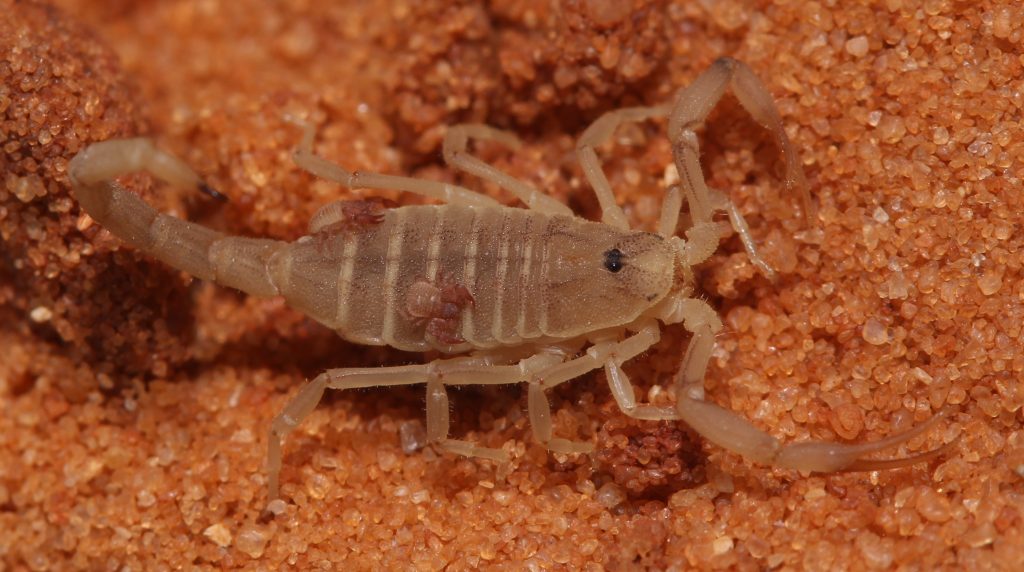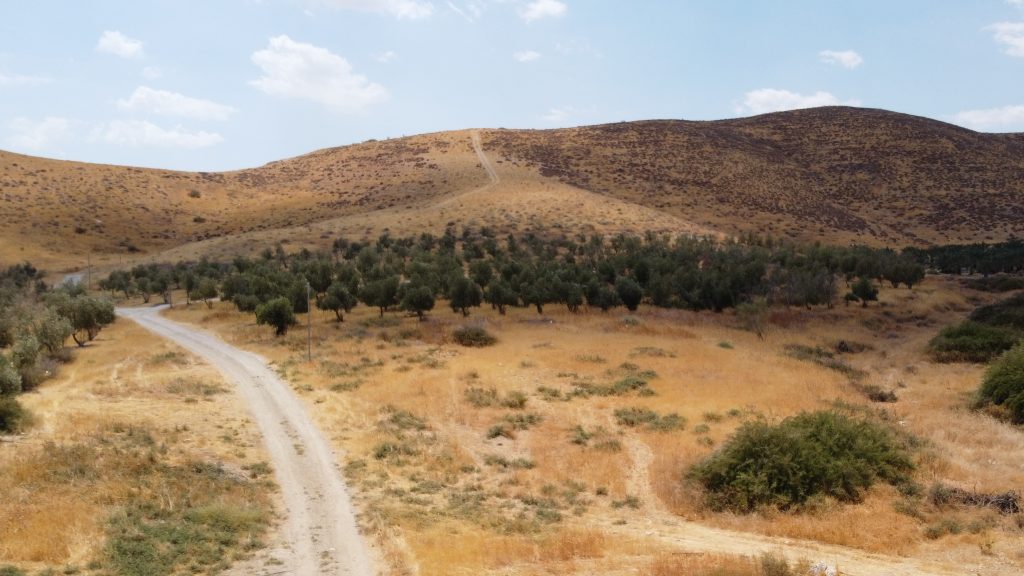
March 18, 2024 — A recent study led by Dr. Sharon Warburg and Dr. Efrat Gavish-Regev from the National Natural History Collections at the Hebrew University of Jerusalem (HU) alongside University of Haifa Ph.D. student Yoram Zvik, documented the first observation of phoresy (a phenomenon where one animal attaches to a host to be taken to new environments) with a pseudoscorpion on a scorpion. The pseudoscorpion Nannowithius wahrmani was observed clinging onto the scorpion Birulatus israelensis. Documented instances of phoresy have been seen in mammals, birds, insects, and even other arachnids.
Nannowithius wahrmani, part of the Withiidae family of pseudoscorpions, encompasses 37 genera and 170 species that can be found all over the world, with a significant presence in tropical and subtropical regions. It was also observed that species within the genus Nannowithius exhibit myrmecophilous tendencies (having positive interspecies associations with ants), often forming a mutually beneficial relationship with ant colonies.

The study conducted was part of an extensive seven-year study, involving field surveys, nest monitoring, and observations in the eastern part of Israel. Over a thousand observations of Birulatus israelensis were documented, with only two observations of the pseudoscorpions species Nannowithius wahrmani on the scorpion’s back during specific dates in late spring.
This groundbreaking observation not only expands our understanding of arachnid behavior but also opens avenues for future research into the intricate world of symbiotic relationships within the ant nest ecosystem. It also prompts further exploration into how pseudoscorpions elude ants, their alternative hosts, and how the arachnids decide to disperse (how they decide to expand the locations in which they live).
The research paper titled “Hitching a ride on a scorpion: the first record of phoresy of a myrmecophile pseudoscorpion on a myrmecophile scorpion” is now available in BioOne Complete and can be accessed here.
Researchers:
Sharon Warburg1, Yoram Zvik2,3, Efrat Gavish-Regev1
Institutions:
1) The National Natural History Collections, The Hebrew University of Jerusalem, Edmond J. Safra Campus, Givat Ram, Jerusalem
2) Hoopoe Ornithology & Ecology Center, Yeroham
3) Department of Evolutionary and Environmental Biology, University of Haifa, Haifa
Related articles
International Day of Elimination of Violence against Women
December 1, 2025 – The Israeli Femicide Observatory at the Hebrew University of Jerusalem (HU) has released new data revealing a sharp rise in femicide cases across Israel. From January 1 to November 18, 2025, 44 women have been murdered, including 32 cases classified as femicide—women
The interaction of biology and culture: Rethinking where language comes from
December 1, 2025 – For centuries, philosophers and scientists have grappled with understanding the origins of human language. Language defines us as a species, yet its origins remain a mystery. In a remarkable international collaboration, ten experts from different disciplines present a
New Magnetic Component Discovered in the Faraday Effect After Nearly Two Centuries
November 26, 2025 – Researchers from the Hebrew University of Jerusalem (HU) have discovered that the magnetic component of light plays a significant role in how it interacts with matter, creating new possibilities in optics, spintronics, and quantum technologies. The study was led



